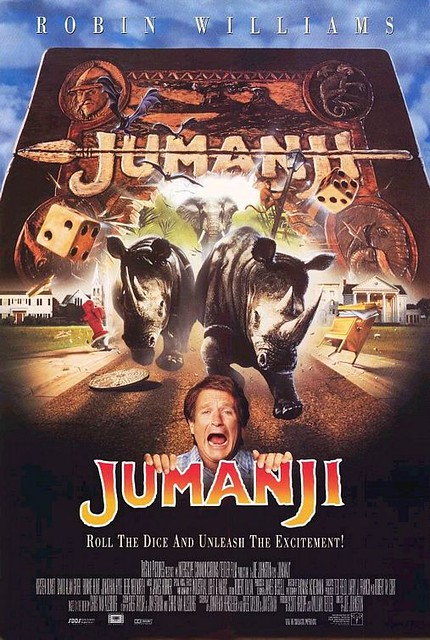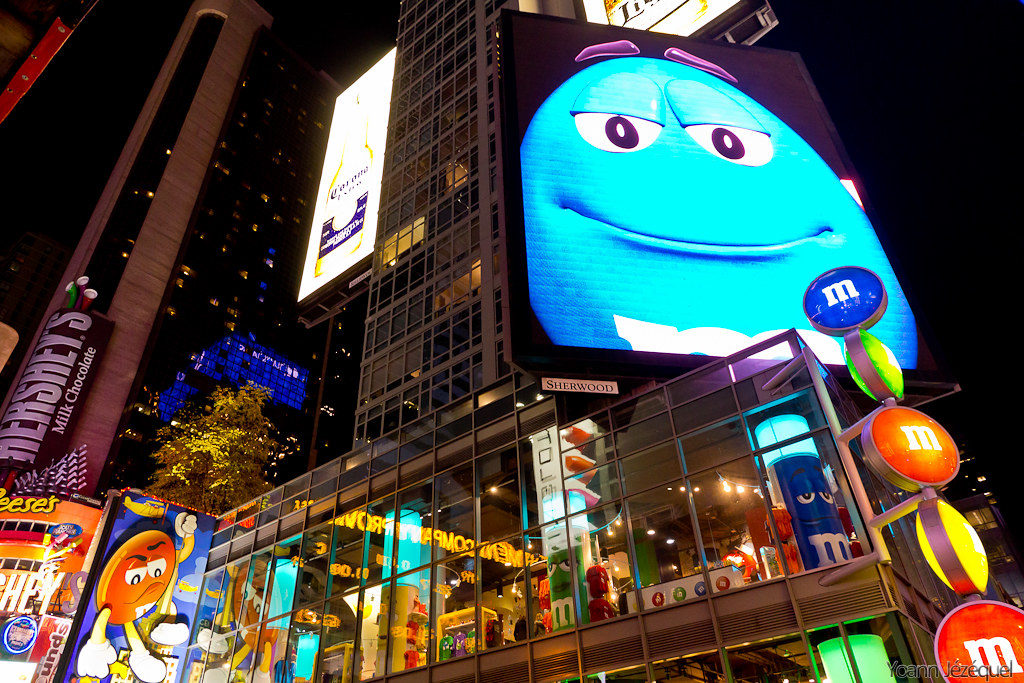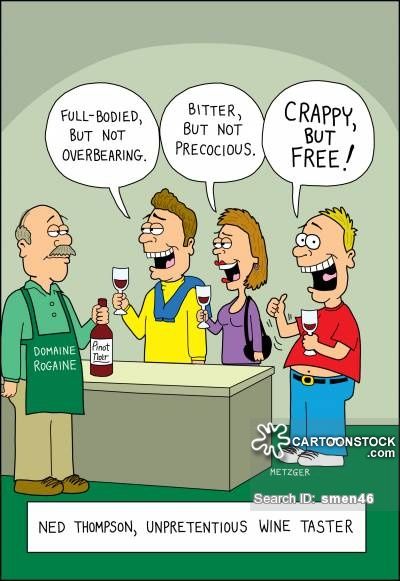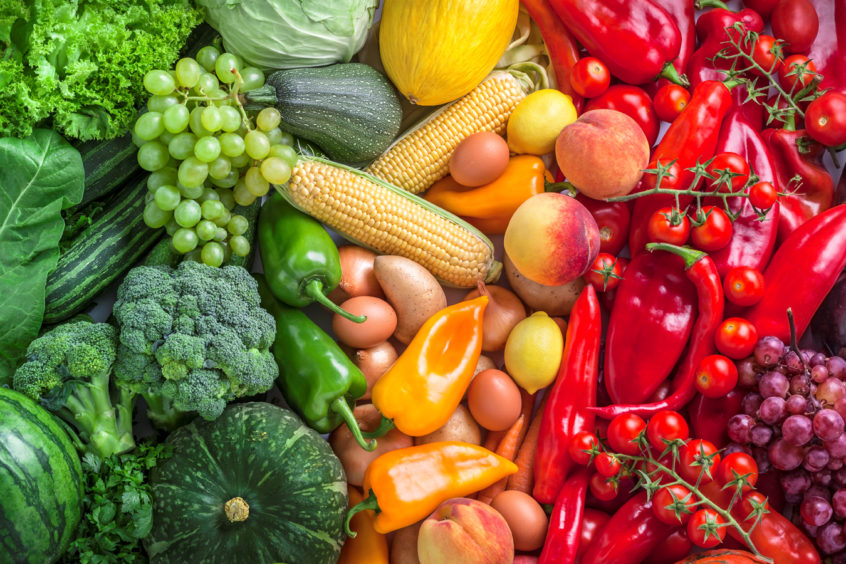Reading Time: ~6 minutes (or less time than you spent in ‘heaven‘ making out in an 8th grade closet).
“Color is the single most important sensory cue when it comes to setting people’s expectations regarding the like taste and flavor of food and drink.”
Psychologist Charles Spence, Oxford University
The Situation

If you regularly read articles on the nutritional arts, you may have heard this advice before: eat for color. The reasoning is evolutionary—color is nature’s way of indicating that the food has a variety of nutrients. Variety is easy these days with Whole Foods flying in kiwis and apples year round. But for our ancestors—whose produce section was basically Jumanji— access to an assortment of (non-poisonous) nutrients at one time was less likely. Getting them when they could was crucial.
But any advice to eat for color because it is healthier, though a good idea, misses the key piece of behavioral allure. Assorting foods by color isn’t advisable just because it provides you with more nutrients—that’s an argument for the reasonable Rider. It’s also crucial because it persuades your Elephant that the colorful food tastes better. In other words, colorful foods attract the impulsive Elephant regardless of the Rider’s health knowledge or self-discipline.
At the salad bar, people don’t say to me, “Wow, what a healthy and diverse set of nutrients you have there.” They say “Wow, your salad actually looks tasty, while mine looks like a bowl of flavorless shrub.”
Good health, then, is not merely the effect of eating a variety of color. A variety of color also causes us to eat healthier food.
But color variety can also get us into trouble. M&Ms and Lucky Charms, for instance, take advantage of our attraction to color and variety, without delivering on the evolutionary promise of novel nutrients. And the real sham is that, for the most part, these dopamine shots don’t even taste different. To my childhood dismay, the blue M&M and the purple marshmallows are merely differently-dyed pieces of sugary emptiness. Mars and Kellogg’s are selling us on a complete illusion, the bastards.

Luckily, not only are there things we can do to avoid this trap, we can also use the color wheel to our advantage.
The Science
We identify good foods—both with respect to taste and safety—by a guess and check method. We see the food, its color being one of its most prominent features, and we remember how it tastes or made us feel. Over time, those colors start to trigger an expectation of a taste.
This makes sense. But what’s shocking is that, eventually, those colors start to influence—not just our expectation of taste—but our actual experience of it. According to Oxford psychologist Charles Spence, this may occur regardless of whether or not that taste is intrinsically part of the food.
We’ve known about color influencing our experience of taste for at least 40 years. In a well-known study from 1980, researchers gave people drinks from a variety of flavors like lemon-lime and orange. The participants were able to taste and clearly identify all of the flavors. Then the researchers dyed the drinks to cross-circuit one’s expectations—for example, the orange looked like lemon-lime. So, although the taste was unchanged, drinkers consistently perceived the taste to be in line with the color, not the underlying flavor.
There are many studies like this. A personal favorite of mine was published two decades later in the Brain and Language journal on the topic of wine tasting. A French researcher had 27 female and 27 male wine experts taste red and white wines, then describe them.

They rattled off the familiar descriptors of each—the ones that adorn your favorite restaurant’s wine menu or that make for great comedic material when the ‘uncultured’ of us jokingly describe the house wine for the benefit of our equally brutish friends.
“Mmm, I’m getting plum… bright red plum, dark cherry… and, oh… Is that a hint of oaky nutmeg?”
But then came the ruse. The experts were invited back a week later to sample the same wines with one key change: tasteless dye had been added so that the red wines looked white and white looked red. And, wouldn’t you know it, these connoisseurs started describing the dyed-red (but actually white) wines with those dark red fruits representative of a Cabernet and vice versa.
One last wrinkle. Although color is perhaps our best indicator of variety, it is the variety itself to which we are most attracted. Other cues tip us off to this, including smell or visual recognition.
As Penn State researcher Barbara Rolls explains, “One may have eaten enough of a particular food and that food will no longer be appealing, but the appetite for other foods will remain.” Her lab has found in many contexts that, regardless of color, more food variety leads to markedly more consumption.
The good news is, we can harness the power of color (and variety even in the absence of color mix) to improve our health.
The Strategies
According to the research cited above, color and variety are powerful Elephant aphrodisiacs. Luckily, our Riders can harness that power to eat more good and avoid more bad. Here’s how:
A. MAKE YOUR SALADS COLORFUL
Use the color wheel. Put purple cabbage next to orange yams, and red peppers next to yellow ones, and blueberries next to green broccoli, pink pickled beets and onions next to sweet yellow corn. Remember that the different colors represent different nutrients.
Pro Tip: If you really want to drive your tastebuds wild, make sure you contrast acidic things with fats. For instance, if you’re going to have pickled veggies, balance it with an avocado.
B. MAKE YOUR SALADS ASSORTED
We are attracted to difference in color and taste. So, in addition to increasing your salad’s color, you may want to throw in a variety of tastes. One great way to do this is to use differently spiced foods.
Try eating spinach two ways: fresh, or steamed with garlic and red pepper flakes. Not only will you get access to different nutrients (heating spinach makes Vitamin A and E more ‘bioavailable’), but the variety makes you likely to consume more.
C. MAKE UNHEALTHY FOODS MONOCHROMATIC
If you must eat ‘cheat’ foods, you can limit consumption by keeping them to one color at a time. Bonus points if that color is bland rather than neon pink. One of the most insidious aspects of the buffet is its sheer visual variety. It sends our reptilian brains into a fat-gorging frenzy. So, if you must get ice cream, try choosing plain old vanilla.
D. LESS VARIETY OF TASTE IN UNHEALTHY FOODS
It’s not just the colors in a buffet, but the different tastes. You can easily suck down a couple thousand calories on a monochromatic cheese plate. Goat, feta, white cheddar, white Munster, for instance—all one color, but deliciously different tastes. To avoid this, keep it to one taste variety.
E. DOMINO FOODS
This applies to our ‘domino’ friends as well. Remember, we like avocado and cashews, but a few handfuls of roasted mixed nuts and a pint of guac will set you back a few meals. So, limit to one kind of raw nut and eat plain avocado instead of guacamole.
MORE TWEAKS?
You can get all seven Tweaks here for free and explained more thoroughly in my new ebook, The Easiest Path to Health. There’s an audio and e-reader version. Reading time ~ 60 minutes.


